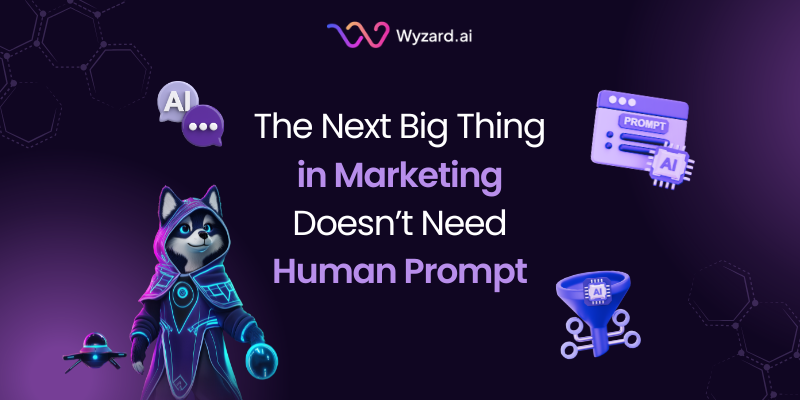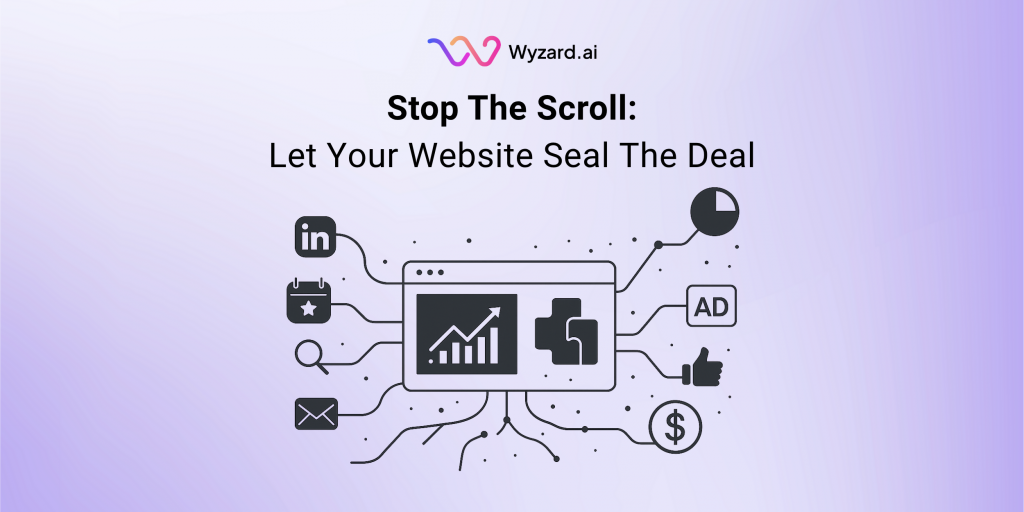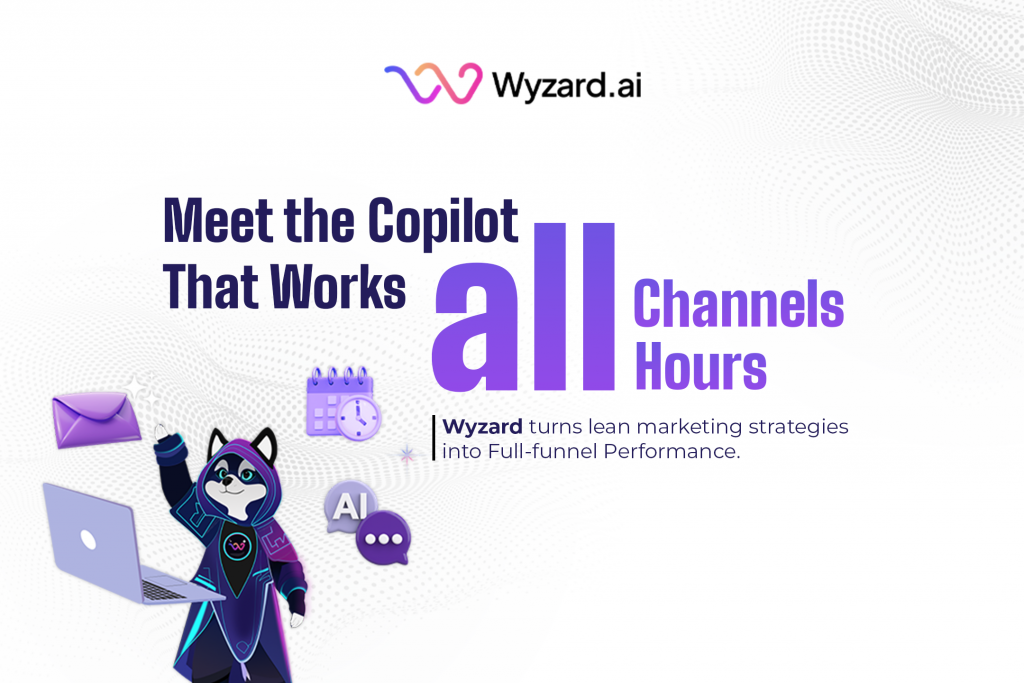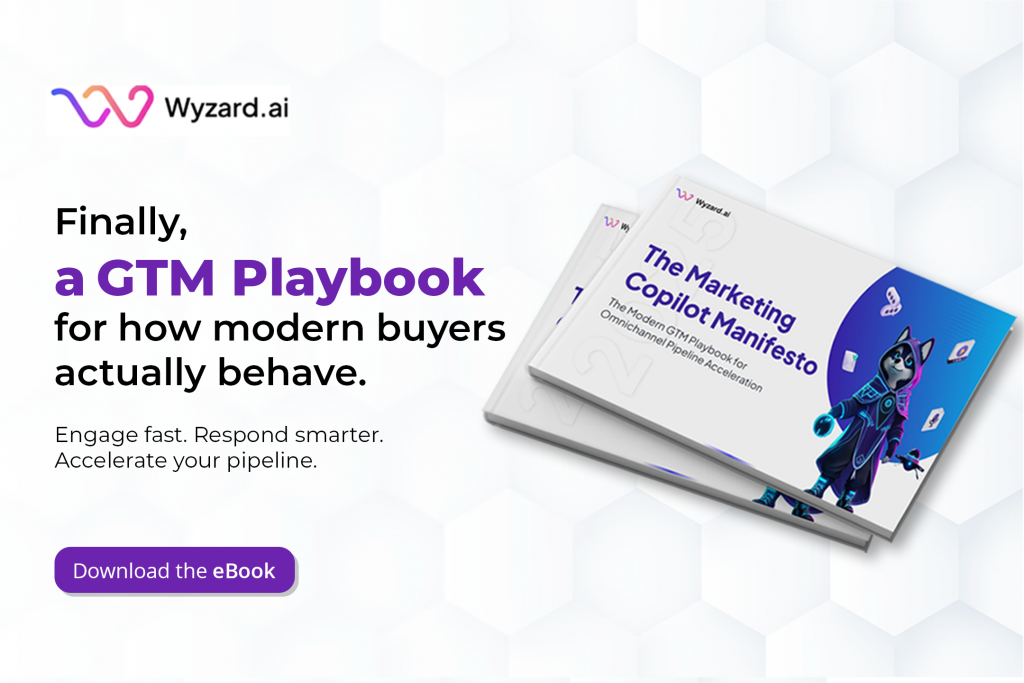Your website isn’t just a digital business card—it’s your highest leverage asset to drive pipeline, revenue, and buyer trust ...
Agentic AI in Marketing: What’s Real, What’s Hype, and Why It Matters


Subscribe Now
The buzz around agentic AI in marketing is getting louder. Yet for many marketing and GTM teams, the line between buzzword and business value is still blurry. In a landscape overflowing with AI promises, it’s time to cut through the noise and ask a more grounded question: what can agentic AI actually do for modern marketing teams?
In this blog, we unpack what agentic AI in marketing really means, why it’s different from previous waves of automation, and how teams can move past the hype into high-impact, real-world applications
What Is Agentic AI in Marketing?
At its core, agentic AI in marketing refers to the use of autonomous AI agents that can not only generate responses but also take meaningful actions within a marketing workflow.
Unlike traditional automation tools or generative AI that produce static content, agentic AI agents are designed to sense, decide, and act within a defined objective. These agents can engage leads, trigger CRM workflows, follow up via email, and even escalate when certain criteria are met—without human intervention.
This shift is significant. Generative AI produces outputs. Agentic AI executes tasks.
By adopting agentic AI in marketing, teams move beyond content generation to intelligent execution. It’s not just about faster copywriting—it’s about faster, smarter pipeline creation.
Debunking the Myths: What Agentic AI Is Not
Before diving deeper, let’s clarify a few common misconceptions:
Myth 1: Agentic AI is just a smarter chatbot.
Reality: AI agents are autonomous. They act based on signals, not scripts. While chat is one possible channel, these agents operate across email, CRM systems, and other tools.
Myth 2: Agentic AI is too complex for most marketing teams.
Reality: Purpose-built agentic systems are becoming increasingly accessible. When designed with marketers in mind, they require minimal setup and integrate with existing tech stacks.
Myth 3: You need massive data infrastructure to use it.
Reality: While advanced data can enhance performance, agentic AI marketing platforms can operate effectively with behavioral triggers and CRM data many teams already have.
Real-World Applications of Agentic AI in Marketing
So what does agentic AI in marketing look like in action? Here are a few high-impact use cases:
1. Real-Time Lead Engagement
Agentic AI can detect high-intent behaviors on a website—like repeated visits to pricing pages or demo requests—and immediately initiate personalized conversations.
The result? Prospects don’t wait. They get contextual, relevant engagement the moment their intent spikes.
Suggested read: Chatbot vs AI Marketing Copilot
2. Multi-Channel Nurture Sequences
Most marketing bots stop at the chat window. Agentic AI continues the conversation through email, SMS, or CRM triggers. For example, if a prospect doesn’t respond to a chat, the AI can send a follow-up email with relevant content or booking links.
3. Intelligent Routing and Escalation
If a lead hits a high-fit + high-intent threshold, the AI can autonomously notify the right sales rep, log the interaction in the CRM, and even schedule a meeting—all without waiting for human input. These aren’t hypothetical features. This is what agentic AI in marketing should do when applied with real business goals in mind.
How Wyzard Fits In: Introducing the AI Marketing Copilot
At Wyzard, we’re not just building a platform—we’re introducing a new kind of teammate: the AI Marketing Copilot.
The AI Marketing Copilot is powered by a multi-agent architecture designed to:
- Engage: Detect buyer intent across channels and initiate the right conversation at the right time.
- Qualify: Use a mix of behavioral signals and firmographics to score and segment leads.
- Follow Up: Drive asynchronous conversations via chat, email, and CRM actions.
- Route: Escalate qualified opportunities to sales with full context.
This isn’t just AI-assisted messaging. The AI Marketing Copilot acts autonomously to guide leads through your funnel, bridging the gap between MQL and SQL without manual effort.
Behind the scenes, multiple agents work in concert to deliver a cohesive, goal-oriented experience. One agent might handle initial qualification, another manages ongoing nurture, and another ensures clean CRM handoff.
That’s the agentic difference: it’s not a single AI doing everything—it’s a system of intelligent agents aligned toward pipeline outcomes.
Even in the production stage, Wyzard is designed to reflect the core principles of agentic AI in marketing: autonomy, coordination, and measurable action.
Generative vs Agentic AI: What Marketers Need to Know
The distinction matters.
- Generative AI creates content (emails, ads, landing pages).
- Agentic AI takes action (sends follow-ups, books demos, updates CRM).
While generative tools are great for top-of-funnel content, they often require human oversight to deliver business results.
Agentic AI marketing tools bridge the gap between generation and execution—turning insight into outcome.

Why Agentic AI in Marketing Matters Now
B2B buyers aren’t waiting around. They expect real-time, personalized interactions. But most marketing and sales teams can’t scale to meet that demand without burning out.
Agentic AI in marketing offers a new path forward. Instead of hiring more SDRs or manually building workflows, teams can deploy autonomous agents to:
- Prevent lead leakage
- Accelerate time-to-engagement
- Increase conversion from inbound traffic
The bottom line? Agentic AI doesn’t just improve efficiency—it enables a fundamentally new GTM motion.
Questions to Ask Before Adopting Agentic AI
Not every team is ready for full-scale deployment—and that’s okay. But here are a few signals that agentic AI in marketing might be right for you:
- Do you have strong inbound traffic but low conversion?
- Are high-intent leads slipping through the cracks?
- Is your SDR team overwhelmed or underperforming?
- Do you rely on CRM and behavioral data to drive decisions?
If you answered yes to two or more, it’s worth exploring how agentic AI can close the gap.
Final Thoughts: Skip the Hype, Focus on the How
Agentic AI in marketing is not a silver bullet—but it is a serious evolution in how modern GTM teams operate.
By replacing static scripts with intelligent agents that can take initiative, B2B marketers unlock a new level of agility and responsiveness. And when paired with the right architecture, like Wyzard’s multi-agent system, those gains become scalable and repeatable.
Ready to see how agentic AI can drive more pipeline from your existing traffic?
Book a demo with Wyzard and take the first step toward autonomous GTM execution.
Other blogs
The latest industry news, interviews, technologies, and resources.
July 3, 2025
Evaluating Marketing Copilots: Key Features Every SMB Marketer Should Consider
B2B marketers at lean, fast-moving companies are no strangers to juggling limited headcount, complex buyer journeys, and pressure to ...

July 2, 2025
The Marketing Copilot Manifesto: A Tactical GTM Playbook for the Modern SaaS Teams
B2B marketers have a traffic problem, but not the kind you think. Your campaigns are driving clicks. Your events ...

 Want to scale pipeline across web, email, ads and events? Grab the new GTM playbook.
Want to scale pipeline across web, email, ads and events? Grab the new GTM playbook.



